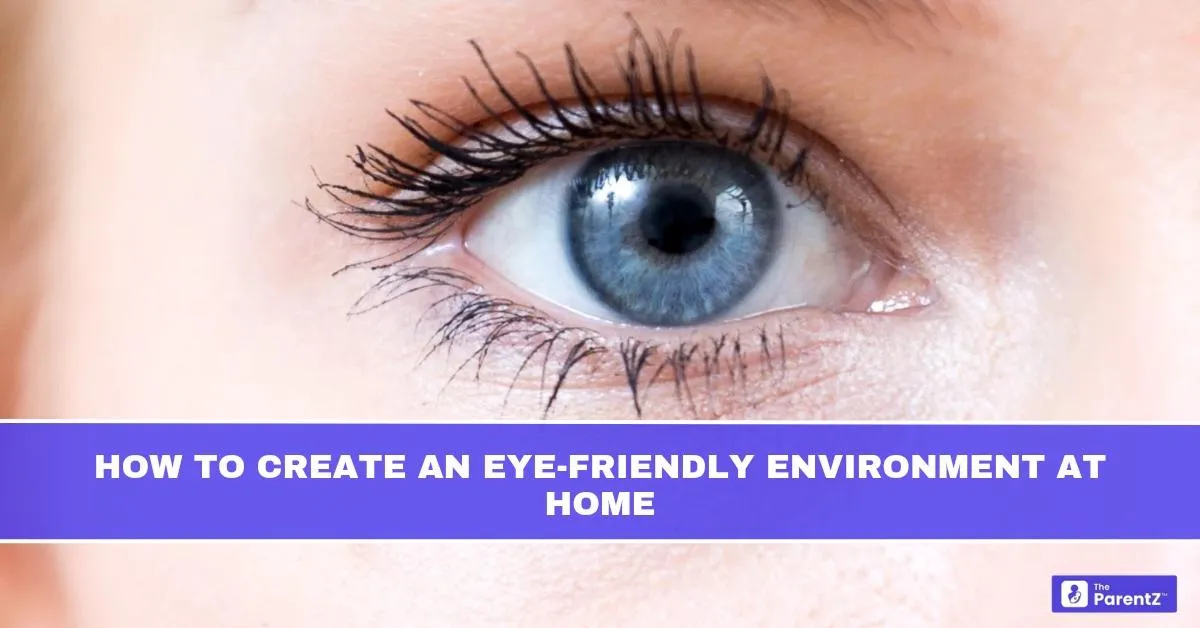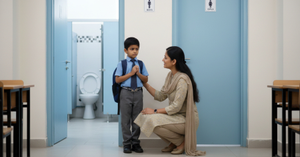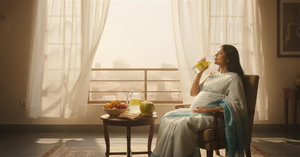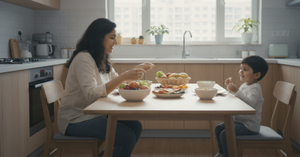The home environment plays a critical role in a child’s visual development. Recent evidence from ophthalmologic and pediatric journals has demonstrated that improper lighting, prolonged near work, and excessive screen exposure at home increase the risk of accommodative dysfunction and the progression of myopia in children. By modifying the home setting to support ocular health, parents can help prevent avoidable visual discomfort and long-term refractive changes.
Optimal Lighting for Visual Tasks
Adequate lighting is essential to minimize accommodative stress during near activities such as reading, writing, or using digital devices. It has been recommended in Ophthalmic Epidemiology that ambient lighting should uniformly illuminate the child’s workspace with a brightness of at least 500 lux at desk level. Task lighting should provide additional focused illumination without creating glare or excessive shadows. It has been advised that lighting fixtures should use warm white LED or compact fluorescent bulbs to reduce high-frequency flicker, which has been associated with visual fatigue in pediatric populations.
Maximizing exposure to natural light during daytime activities has been shown to reduce the incidence of myopia onset. Studies in Investigative Ophthalmology & Visual Science have highlighted the importance of designing study spaces near windows, ensuring balanced lighting, and minimizing harsh contrasts between screen brightness and room illumination.
Ergonomics and Posture
Proper seating and desk arrangements are necessary to maintain a comfortable viewing distance and posture, thereby reducing accommodative strain. The child’s chair height should allow feet to rest flat on the floor, with knees and hips positioned at approximately 90 degrees. The work surface should be slightly below chest level, allowing reading material to be held at a 30–40 cm distance from the eyes.
Computer screens and tablets should be placed at or slightly below eye level, positioned approximately 40–50 cm from the child’s eyes, in accordance with recommendations from the American Academy of Ophthalmology. These guidelines aim to maintain appropriate vergence and accommodation, minimizing the risk of eye strain.
Screen Time Management
Excessive near-point visual tasks, especially involving electronic devices, have been associated with increased prevalence of myopia and visual discomfort. The British Journal of Ophthalmology has reported a correlation between sustained near work and myopic progression, particularly in urban environments. It has been recommended that parents encourage the 20-20-20 rule, whereby children are instructed to look at an object 20 feet away for at least 20 seconds every 20 minutes of near work.
Guidelines established by the American Academy of Pediatrics suggest limiting screen exposure for children younger than 5 years to less than 1 hour of supervised, high-quality content daily, with structured limits for older children to prevent interference with sleep, outdoor activities, and academic performance.
Outdoor Activity for Myopia Prevention
Time spent outdoors has been shown to exert a protective effect against the development and progression of myopia in children. Randomized trials and cohort studies in East Asia and Europe, as reported in Ophthalmology, have demonstrated that children engaging in at least 2 hours of outdoor activities daily experience significantly lower rates of axial elongation and myopic shift. Natural daylight exposure facilitates retinal dopamine release, which inhibits excessive ocular growth.
Daily routines incorporating outdoor play, including cycling, running, or organized sports, should be prioritized by parents to provide the necessary exposure to protective natural light.
Environmental Organization and Visual Focus
Visual clutter in study and play areas can increase cognitive and accommodative load, leading to eye strain and reduced concentration. A study environment should remain organized, with minimal distracting objects in the child’s immediate field of view. Shelving or storage solutions may be employed to ensure that toys, books, and materials not in use are kept out of sight, enabling the child to shift visual attention more efficiently between near and distant tasks.
Indoor Air Quality and Humidity
Dry or polluted indoor air can exacerbate ocular surface irritation, contributing to pediatric dry eye symptoms. Research in Cornea and Ocular Surface journals has emphasized maintaining indoor humidity levels between 40% and 60% using a humidifier during periods of heating or air conditioning. The use of air purifiers can further reduce exposure to airborne irritants, including dust and allergens, which may lead to increased eye rubbing and secondary infections.
Scheduled Breaks and Visual Hygiene
Structured breaks during prolonged near tasks are essential to reduce accommodative fatigue. Pediatric ophthalmologists have advised scheduling 5- to 10-minute breaks every 45–60 minutes of continuous near work. During breaks, children should be encouraged to perform blinking exercises or engage in distance viewing to relax the ciliary muscles.
Establishing daily routines with fixed periods for reading, screen use, and outdoor play fosters consistent habits that support long-term ocular health.
Parental Modeling of Eye-Healthy Behaviors
Evidence from observational studies published in Pediatric Research has indicated that children often emulate parental behaviors related to visual health. Parents who demonstrate appropriate reading postures, limit their own screen exposure, and participate in outdoor activities set a positive example that promotes similar habits in children.
Conclusion
An eye-friendly home environment can significantly reduce the risk of accommodative dysfunction, myopia progression, and ocular discomfort in children. Ensuring optimal lighting, appropriate ergonomics, structured routines with outdoor activities, and a visually organized space collectively contribute to maintaining healthy vision. Parents who implement these strategies and model positive behaviors provide their children with a strong foundation for lifelong ocular health.
References
- Rose KA, et al. Outdoor activity reduces the prevalence of myopia in children. Ophthalmology. 2008;115(8):1279-1285.
- Wu PC, et al. Environmental factors associated with myopia: A systematic review. Br J Ophthalmol. 2019;103(7):895-901.
- Huang HM, et al. The association between near work activities and myopia in children: A systematic review and meta-analysis. PLoS One. 2015;10(10):e0140419.
- American Academy of Ophthalmology. Myopia in Children: Guidelines for Care. San Francisco, CA: AAO; 2022.
- American Academy of Pediatrics. Media and Young Minds. Pediatrics. 2016;138(5):e20162591.








Be the first one to comment on this story.